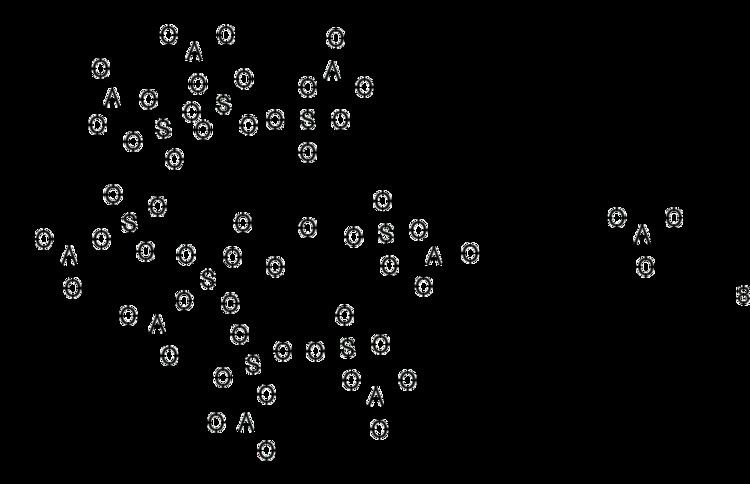Trade names Carafate MedlinePlus a681049 Molar mass 2,086.75 g/mol | AHFS/Drugs.com Monograph Pregnancycategory B Formula C12H54Al16O75S8 CAS ID 54182-58-0 | |
 | ||
Routes ofadministration oral, suspension, rectal suspension IUPAC ID Hexadeca-μ-hydroxytetracosahydroxy[μ8-[1,3,4,6-tetra-O-sulfo-β-Dfructofuranosyl-α-D-glucopyranoside tetrakis(hydrogen sulfato)8-)]]hexadecaaluminum | ||
Trent s medication sucralfate
Sucralfate is a medication primarily taken to treat active duodenal ulcers. Sucralfate is also used for the treatment of gastroesophageal reflux disease (GERD) and stress ulcers.
Contents
- Trent s medication sucralfate
- Medical uses
- Side effects
- Mechanism of action
- Pharmacokinetics
- Names
- References
Sucralfate is a sucrose sulfate-aluminium complex that binds to the ulcer, creating a physical barrier that protects the gastrointestinal tract from stomach acid and prevents the degradation of mucus. It also promotes bicarbonate production and acts like an acid buffer with cytoprotective properties.
Medical uses
Sucralfate is used for the treatment of active duodenal ulcers not related to the use of nonsteroidal anti-inflammatory drugs (NSAIDs), as the mechanism behind these ulcers is due to acid oversecretion. It is not FDA approved for gastric ulcers, as the main mechanism is not due to acid oversecretion but rather from diminished protection. The use for sucralfate in peptic ulcer disease has diminished recently, but it is still the preferred agent for stress ulcer prevention.
Sucralfate has also been used for the following conditions:
Side effects
The most common side effect seen is constipation (2-3%). Less commonly reported side effects (<0.5%) include flatulence, headache, hypophosphatemia, xerostomia (dry mouth), and bezoar formation. Avoid using this drug in people with chronic kidney failure, as it might cause aluminium accumulation and toxicity. There is a limited number of well-controlled studies investigating the safety and efficacy of sucralfate in children and pregnant women (Pregnancy Category B).
Mechanism of action
Sucralfate is a locally acting substance that in an acidic environment (pH < 4) reacts with hydrochloric acid in the stomach to form a cross-linking, viscous, paste-like material capable of acting as an acid buffer for as long as 6 to 8 hours after a single dose. It also attaches to proteins on the surface of ulcers, such as albumin and fibrinogen, to form stable insoluble complexes. These complexes serve as protective barriers at the ulcer surface, preventing further damage from acid, pepsin, and bile. In addition, sucralfate prevents back diffusion of hydrogen ions, and adsorbs both pepsin and bile acids.
Recently, it has been thought that sucralfate also stimulates the production of prostaglandin E2, epidermal growth factors (EGF), bFGF, and gastric mucus.
Pharmacokinetics
Onset: 1-2 hr (initial onset for peptic ulcer disease (PUD))
Absorption: <5% Orally
Duration: Up to 6 hours due to high affinity for defective mucosa (PUD)
Bioavailability: 5% as sucralfate is considered non-systemic, sucrose octasulfate: 5%, aluminum:0.005%
Metabolism: Not metabolized, excreted unchanged in urine
Excretion: Primarily in urine as unchanged drug
Names
Brand names include Carafate in U.S.A., Sucramal in Italy, Sucrafil, Sufrate, Sucralpro, Sucralcoat, Pepsigard, Sucral, Hapifate in India, Sutra or Musin in parts of South-East Asia, Sulcrate in Canada, Ulsanic in South Africa and Israel, Andapsin in Sweden and Antepsin in Turkey.
